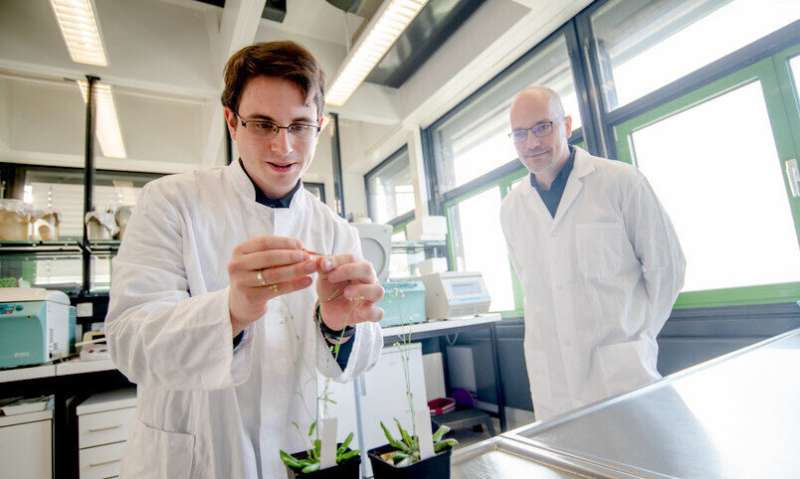Newly discovered receptor helps to sneak a peek at evolution

Together with lipids, membrane proteins are a central component of all biological membranes and fulfill important functions in transport and information transfer within and between cells. The majority of membrane proteins are recognized by a signal recognition particle on the basis of signal sequences at the front end of the protein and are incorporated into the membrane of the endoplasmic reticulum during their synthesis. From there, the proteins are transported to most of the important cellular membranes.
However, there is a functionally important family of membrane proteins whose signal sequence is located at the end of the protein. "Therefore, these proteins can't be integrated into the membrane the usual way," explains lead author Lisa Yasmin Asseck. These so-called tail-anchored (TA) proteins use a mechanism known as GET pathway. GET stands for Guided Entry of TA proteins.
Transport and insertion
The central component of the pathway is a vehicle within the cell fluid, the cytosolic ATPase GET3. It transfers the newly synthesized TA proteins to the receptors GET1 and GET2, which are bound to the endoplasmic reticulum and ensure their membrane insertion.
While the pathway with all its components has been thoroughly described in mammals and their more closely related yeasts, it remained puzzling in plants. "Some components could be identified in plants based on sequence similarities, but there was no trace of the receptor protein GET2," says Christopher Grefen.
An ancient legacy
His team has now successfully identified this previously undiscovered receptor in the model plant Arabidopsis thaliana. By specifically eliminating the receptor—using for example the Crispr/Cas9 genetic scissors—the researchers were also able to study its function more closely. "The only difference between wildtype and Arabidopsis mutants lacking the GET2 receptor is that the latter develop shorter root hairs," explains Grefen. "This does not restrict the growth of the plants under laboratory conditions, it could, however, pose a problem in the wild—especially when water is scarce." Interestingly, mammals without a GET2 receptor are unable to survive, whereas yeast cells can grow, since they have developed a backup mechanism that kicks in when the receptor is missing.
A remarkable observation for the researchers is the fact that the GET2 receptors of different organisms show great structural similarities despite differences in sequence. "This suggests that their function is evolutionarily conserved. That means that the GET pathway has been around for a very long time, and today's organisms have inherited it from their last common ancestor during evolution," says Christopher Grefen. "The discovery of the protein sequence of GET2 from Arabidopsis provides an important piece of the puzzle for understanding the cross-kingdom evolution of the GET pathway and, at the same time, serves as basis for further studies in other plant and algal species."
More information: R membrane receptors of the GET pathway are conserved throughout eukaryotes, PNAS, 2020, www.pnas.org/cgi/doi/10.1073/pnas.2017636118
Journal information: Proceedings of the National Academy of Sciences
Provided by Ruhr-Universitaet-Bochum



















